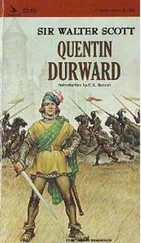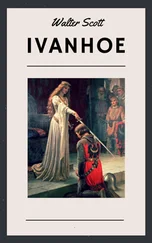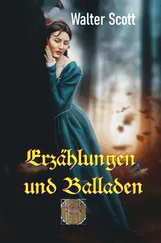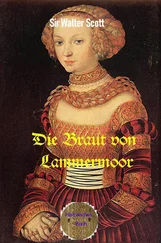Walter Scott - Letters on Demonology and Witchcraft
Здесь есть возможность читать онлайн «Walter Scott - Letters on Demonology and Witchcraft» весь текст электронной книги совершенно бесплатно (целиком полную версию без сокращений). В некоторых случаях можно слушать аудио, скачать через торрент в формате fb2 и присутствует краткое содержание. Жанр: История, на английском языке. Описание произведения, (предисловие) а так же отзывы посетителей доступны на портале библиотеки ЛибКат.
- Название:Letters on Demonology and Witchcraft
- Автор:
- Жанр:
- Год:неизвестен
- ISBN:нет данных
- Рейтинг книги:4 / 5. Голосов: 1
-
Избранное:Добавить в избранное
- Отзывы:
-
Ваша оценка:
- 80
- 1
- 2
- 3
- 4
- 5
Letters on Demonology and Witchcraft: краткое содержание, описание и аннотация
Предлагаем к чтению аннотацию, описание, краткое содержание или предисловие (зависит от того, что написал сам автор книги «Letters on Demonology and Witchcraft»). Если вы не нашли необходимую информацию о книге — напишите в комментариях, мы постараемся отыскать её.
Letters on Demonology and Witchcraft — читать онлайн бесплатно полную книгу (весь текст) целиком
Ниже представлен текст книги, разбитый по страницам. Система сохранения места последней прочитанной страницы, позволяет с удобством читать онлайн бесплатно книгу «Letters on Demonology and Witchcraft», без необходимости каждый раз заново искать на чём Вы остановились. Поставьте закладку, и сможете в любой момент перейти на страницу, на которой закончили чтение.
Интервал:
Закладка:
At Auldearne, a parish and burgh of barony in the county of Nairne, the epidemic terror of witches seems to have gone very far. The confession of a woman called Isobel Gowdie, of date April, 1662, implicates, as usual, the Court of Fairy, and blends the operations of witchcraft with the facilities afforded by the fairies. These need be the less insisted upon in this place, as the arch-fiend, and not the elves, had the immediate agency in the abominations which she narrates. Yet she had been, she said, in the Dounie Hills, and got meat there from the Queen of Fairies more than she could eat. She added, that the queen is bravely clothed in white linen and in white and brown cloth, that the King of Fairy is a brave man; and there were elf-bulls roaring and skoilling at the entrance of their palace, which frightened her much. On another occasion this frank penitent confesses her presence at a rendezvous of witches, Lammas, 1659, where, after they had rambled through the country in different shapes—of cats, hares, and the like—eating, drinking, and wasting the goods of their neighbours into whose houses they could penetrate, they at length came to the dounie Hills, where the mountain opened to receive them, and they entered a fair big room, as bright as day. At the entrance ramped and roared the large fairy bulls, which always alarmed Isobel Gowdie. These animals are probably the water-bulls, famous both in Scottish and Irish tradition, which are not supposed to be themselves altogether canny or safe to have concern with. In their caverns the fairies manufactured those elf-arrow heads with which the witches and they wrought so much evil. The elves and the arch-fiend laboured jointly at this task, the former forming and sharpening the dart from the rough flint, and the latter perfecting and finishing (or, as it is called, dighting ) it. Then came the sport of the meeting. The witches bestrode either corn-straws, bean-stalks, or rushes, and calling, "Horse and Hattock, in the Devil's name!" which is the elfin signal for mounting, they flew wherever they listed. If the little whirlwind which accompanies their transportation passed any mortal who neglected to bless himself, all such fell under the witches' power, and they acquired the right of shooting at him. The penitent prisoner gives the names of many whom she and her sisters had so slain, the death for which she was most sorry being that of William Brown, in the Milntown of Mains. A shaft was also aimed at the Reverend Harrie Forbes, a minister who was present at the examination of Isobel, the confessing party. The arrow fell short, and the witch would have taken aim again, but her master forbade her, saying the reverend gentleman's life was not subject to their power. To this strange and very particular confession we shall have occasion to recur when witchcraft is the more immediate subject. What is above narrated marks the manner in which the belief in that crime was blended with the fairy superstition.
To proceed to more modern instances of persons supposed to have fallen under the power of the fairy race, we must not forget the Reverend Robert Kirke, minister of the Gospel, the first translator of the Psalms into Gaelic verse. He was, in the end of the seventeenth century, successively minister of the Highland parishes of Balquidder and Aberfoyle, lying in the most romantic district of Perthshire, and within the Highland line. These beautiful and wild regions, comprehending so many lakes, rocks, sequestered valleys, and dim copsewoods, are not even yet quite abandoned by the fairies, who have resolutely maintained secure footing in a region so well suited for their residence. Indeed, so much was this the case formerly, that Mr. Kirke, while in his latter charge of Aberfoyle, found materials for collecting and compiling his Essay on the "Subterranean and for the most part Invisible People heretofore going under the name of Elves, Fawnes, and Fairies, or the like." [36] [36] The title continues:—"Among the Low Country Scots, as they are described by those who have the second sight, and now, to occasion farther enquiry, collected and compared by a circumspect enquirer residing among the Scottish-Irish ( i.e. , the Gael, or Highlanders) in Scotland." It was printed with the author's name in 1691, and reprinted, Edinburgh, 1815, for Longman & Co.
In this discourse, the author, "with undoubting mind," describes the fairy race as a sort of astral spirits, of a kind betwixt humanity and angels—says, that they have children, nurses, marriages, deaths, and burials, like mortals in appearance; that, in some respect, they represent mortal men, and that individual apparitions, or double-men, are found among them, corresponding with mortals existing on earth. Mr. Kirke accuses them of stealing the milk from the cows, and of carrying away, what is more material, the women in pregnancy, and new-born children from their nurses. The remedy is easy in both cases. The milk cannot be stolen if the mouth of the calf, before he is permitted to suck, be rubbed with a certain balsam, very easily come by; and the woman in travail is safe if a piece of cold iron is put into the bed. Mr. Kirke accounts for this by informing us that the great northern mines of iron, lying adjacent to the place of eternal punishment, have a savour odious to these "fascinating creatures." They have, says the reverend author, what one would not expect, many light toyish books (novels and plays, doubtless), others on Rosycrucian subjects, and of an abstruse mystical character; but they have no Bibles or works of devotion. The essayist fails not to mention the elf-arrow heads, which have something of the subtlety of thunderbolts, and can mortally wound the vital parts without breaking the skin. These wounds, he says, he has himself observed in beasts, and felt the fatal lacerations which he could not see.
It was by no means to be supposed that the elves, so jealous and irritable a race as to be incensed against those who spoke of them under their proper names, should be less than mortally offended at the temerity of the reverend author, who had pryed so deeply into their mysteries, for the purpose of giving them to the public. Although, therefore, the learned divine's monument, with his name duly inscribed, is to be seen at the east end of the churchyard at Aberfoyle, yet those acquainted with his real history do not believe that he enjoys the natural repose of the tomb. His successor, the Rev. Dr. Grahame, has informed us of the general belief that, as Mr. Kirke was walking one evening in his night-gown upon a Dun-shi, or fairy mount, in the vicinity of the manse or parsonage, behold! he sunk down in what seemed to be a fit of apoplexy, which the unenlightened took for death, while the more understanding knew it to be a swoon produced by the supernatural influence of the people whose precincts he had violated. After the ceremony of a seeming funeral, the form of the Rev. Robert Kirke appeared to a relation, and commanded him to go to Grahame of Duchray, ancestor of the present General Graham Stirling. "Say to Duchray, who is my cousin as well as your own, that I am not dead, but a captive in Fairyland, and only one chance remains for my liberation. When the posthumous child, of which my wife has been delivered since my disappearance, shall be brought to baptism, I will appear in the room, when, if Duchray shall throw over my head the knife or dirk which he holds in his hand, I may be restored to society; but if this opportunity is neglected, I am lost for ever." Duchray was apprised of what was to be done. The ceremony took place, and the apparition of Mr. Kirke was visibly seen while they were seated at table; but Grahame of Duchray, in his astonishment, failed to perform the ceremony enjoined, and it is to be feared that Mr. Kirke still "drees his weird in Fairyland," the Elfin state declaring to him, as the Ocean to poor Falconer, who perished at sea after having written his popular poem of "The Shipwreck"—
Читать дальшеИнтервал:
Закладка:
Похожие книги на «Letters on Demonology and Witchcraft»
Представляем Вашему вниманию похожие книги на «Letters on Demonology and Witchcraft» списком для выбора. Мы отобрали схожую по названию и смыслу литературу в надежде предоставить читателям больше вариантов отыскать новые, интересные, ещё непрочитанные произведения.
Обсуждение, отзывы о книге «Letters on Demonology and Witchcraft» и просто собственные мнения читателей. Оставьте ваши комментарии, напишите, что Вы думаете о произведении, его смысле или главных героях. Укажите что конкретно понравилось, а что нет, и почему Вы так считаете.









